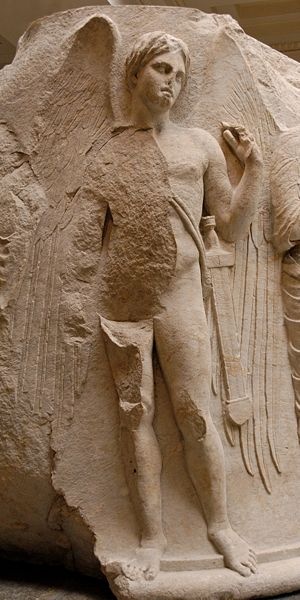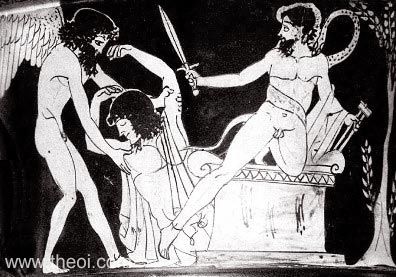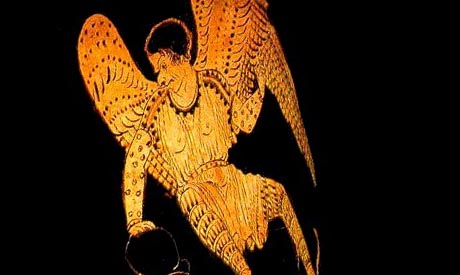You are currently browsing the tag archive for the ‘pain’ tag.
Ferrebeekeeper, like its author is meant to be benevolent and philosophical. Yet sometimes, despite our best intentions, we all must grapple with the unthinkable–this is why, today, we descend into a realm of unimaginable pain. Allow me to present the dreadful bullet ant (Paraponera clavata) also known as the 24-hour ant–the hymenopteran that sits at the apex of the Schmidt Sting Pain Index. The worker ants of this genus are 18–30 mm (0.7 to 1.2 inches) long; there are no soldiers or other castes (and the queen herself is not much larger than any of the workers). They live in nests just underground and they hunt for small arthropods (and nectar) in the trees above.
The common name of the ant comes from the 24 hour agony caused by the creature’s excruciating sting. Victims of the ant claim that being stung feels the same as being shot (and since the ant ranges from Nicaragua and eastern Honduras south to Paraguay, it seems likely that some of the people it has stung have sufficient personal experience to intelligently make the comparison). The ant’s venom is poneratoxin–a short chain of amino acids held together by covalent bonds–which acts as a neurotoxin. Poneratoxin affects voltage-dependent sodium ion channels which therefor disrupts synaptic transmission within the central nervous system. That sounds clinical and antiseptic, but people stung by the ant describe hours upon hour of unrelenting abject agony (along with partial paralysis and general flailing in the afflicted part).
The ants have developed this potent sting as a means to deter animals which might unearth and disturb their underground nests (or otherwise harass them as they hunt and gather food). Unfortunately, the ants never reckoned on the madness of humans. The Satere-Mawe people of Brazil, an Amazonian tribe of hunter gatherers utilize the ants as part of their manhood initiation ritual. Shamans lull a hive of ants into paralysis with smoke and then sew the living ants (stinger end out) into a sort of grass mitten. Thirteen-year-old boys take turns putting on the mitten for five to ten minutes. Then the initiates face 24 hours of partial paralysis as well as pain so intense that it causes hallucinations and madness (and some boys die from the ceremony). In order to be respected as a stoic and fearless warrior a young Satere-Mawe man might undergo this ritual a score of times.
In ancient Greece, there were two incarnations of death. The more well-known Greek personification of Death was Thanatos, the child of Nyx and brother of Hypnos (Sleep). Thanatos represented natural death and was portrayed as a gentle being. He was represented either as a kind handsome bearded man with wings or as a beautiful winged child. Thantos is sometimes portrayed carrying a butterfly, a wreath, or an inverted torch. Thanatos is frequently represented on funerary stele and on vases—a peaceful figure who led souls away after they had lived full lives.
However Thanatos had a flock of hellish sisters, the Keres, dark flying beings with sharp teeth and an insatiable taste for blood. The Keres represented violent senseless death. They flew in the thousands above battlefields and hung over plague ravaged cities. The Keres were associated with the apparatus of violent death–famine, madness, agony, hate, and violence, yet classical authors also sometimes treat them as oddly personal—like a bullet with a soldier’s name on it. Keres were portrayed like harpies or demons—cruel women with fangs and talons dressed in bloody ripped garments. When they found a wounded or sick person the Keres would descend to feast on blood. Hesiod’s harrowing poem, The Shield of Heracles describes them in such a manner:
The black Keres, clashing their white teeth,
Grim faced, shaggy, blood-bespattered, dread,
Kept struggling for the fallen. They all wanted
To drink black blood. Whom first they caught.
Lying or fallen newkly wounded, around him
They threw their might talosns, and the shade to Hades
Went, in icy Tartarus. Their hearts were glutted
With human blood: they threw away the corpse
And back to the tumult and fighting rushed, in new desire
(verses 248-257)
Hesiod also indirectly indicates that the Keres were among the horrible fates which flew out of Pandora’s box and have subsequently plagued mankind. The Romans also believed in these cruel & deadly incarnations of fat. The Roman name for the entities was tenebrae—“darknesses”
The Keres do not fit neatly into the larger Greco-Roman pantheon. Perhaps, like Nyx herself, they were outsider gods left over from some earlier tradition. Throughout the course of classical history, their portrayal and their fatalistic meaning changed. However they were a part of classical thought. It is important to mention them when writing about the Greek underworld. The dark realm below was haunted by these cruel children of night—they would fly forth when disaster struck humankind.
Justin Orvel Schmidt (pictured above) is an entomologist who specializes in insect defenses. His greatest expertise is in the stings of hymenopterans—the bees, wasps, sawflies, hornets, and ants (although he also researches the toxic/chemical defences of other arthropods). In the early 1980’s Schmidt attempted to systematize the different medical and physiological effects of insect stings. This work led him to coauthor one of the comprehensive tomes on the subject of insect venom Insect Defenses: Adaptive Mechanisms and Strategies of Prey and Predators. Unfortunately for Schmidt, in the course of his researches, he has been stung/bitten innumerable times by various aggressive and toxic insects (and other creepy crawlies) from around the world.

Did you know that bullet ants look just like ants? In a moment that fact will horrify you. ( Photo: Getty Images/Peter Arnold)
Based on these experiences, Schmidt attempted to categorize the algogenic (i.e. pain-inducing) effects of hymenopteran stings in the now world-famous Schmidt sting pain index. This index is a captivating blend of subjective pain analysis, horrifying real world experience, and inventive poetry. The lowest sting on the Schmidt index is a 0—betokening a sting which has no effect on humans. The highest rating is a 4 which describes an experience of maddening absolute agony. The index became famous because of an interview with Outdoor magazine. Schmidt has since conceded that his descriptive efforts lack an empirical basis and that stings vary depending on body location and the amount of venom injected. Because of such admissions, Wikipedia took down its remarkable table of stings–which is a shame because the subjective descriptions gave the index its visceral power. Here is a sampling copied verbatim from “Retrospectacle: A Neuroscience Blog”:
1.0 Sweat bee: Light, ephemeral, almost fruity. A tiny spark has singed a single hair on your arm.
1.2 Fire ant: Sharp, sudden, mildly alarming. Like walking across a shag carpet & reaching for the light switch.
1.8 Bullhorn acacia ant: A rare, piercing, elevated sort of pain. Someone has fired a staple into your cheek.
2.0 Bald-faced hornet: Rich, hearty, slightly crunchy. Similar to getting your hand mashed in a revolving door.
2.0 Yellowjacket: Hot and smoky, almost irreverent. Imagine W. C. Fields extinguishing a cigar on your tongue.
2.x Honey bee and European hornet: Like a matchhead that flips off and burns on your skin.
3.0 Red harvester ant: Bold and unrelenting. Somebody is using a drill to excavate your ingrown toenail.
3.0 Paper wasp: Caustic & burning. Distinctly bitter aftertaste. Like spilling a beaker of hydrochloric acid on a paper cut.
4.0 Pepsis wasp: Blinding, fierce, shockingly electric. A running hair drier has been dropped into your bubble bath.
4.0+ Bullet ant: Pure, intense, brilliant pain. Like fire-walking over flaming charcoal with a 3-inch rusty nail in your heel.
While the work lacks rigorous empirical criteria, even the most relentlessly analytical critics seem to aver that being stung by over 150 different species of arthtopods gives Schmidt a certain robust validity. The literary merit of the metaphors is certainly genuine (although one hopes that the good Doctor Schmidt never actually dropped a hair dryer into his bubble bath or let misanthropic vaudevillians torture him with fire). Personally I have only been stung by sweat bees, honey bees, and yellow jackets, so I cannot testify to the more esoteric sting ratings (thankfully–since yellowjacket stings nearly did me in), however something sounds completely right about the yellowjacket sting description. I recall a moment of warmth which metastasized almost immediately into a sour panic-inducing pain which spread through my arm and then my body.
In conclusion, I salute Justin Orvel Schmidt as a man of science and a masochistic poet/performance artist. If he claims that a bullet ant sting is the worst hymenopteran sting, I see no cause to contradict him and I never want to think about it again.














